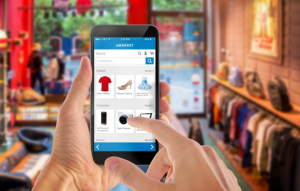Over the summer, news broke that both Facebook and Twitter were continuing to experiment with e-commerce through a Buy button within posts and tweets. Both are currently being tested with a small number of clients, yet advertisers and marketers are eagerly awaiting its arrival.

Rather than rushing the roll out, Facebook and Twitter are making the smart move by trying to perfect (as best they can) the offering for advertisers and customers alike. Refining, testing, and improving the service will be particularly important for Facebook, especially given past blunders in the e-commerce space. If successful, it could provide a new revenue stream for social networks through transaction fees or a percentage of purchases.
With 2015 around the corner, here are 3 important things to consider:
The Importance of Customer Reviews
The ultimate goal of an integrated “Buy” button is to seamlessly convert within the platform while customers continue to post pictures of their kids or contribute pithy quotes to trending news items. Customers’ purchasing decisions are heavily influenced by recommendations from friends, family, and total strangers more than ever, which is why the seemingly endless abyss of Amazon reviews has helped make it the enormous e-commerce success that it is. If Facebook and Twitter are going to compete in the e-commerce space, they’ll need to make user reviews easy to access without disrupting the user experience and forcing users to do an independent search that could lead to a sale elsewhere.
Data
One of the biggest advantages of these Buy buttons is that they can definitively connect a tweet or post to a purchase. Social media can be a valuable marketing tool, but directly tying revenues to content will further solidify social’s importance to a brand or business’ marketing mix, especially for data related to purchasing habits online.
Shoo, Buy, Don’t Bother Me
When users are posting those kid pictures or pithy quotes, they don’t want to feel like they are being marketed to in the same space. That’s not to say that advertising through social cannot be successful, like in the case of Facebook’s ad revenue growth on mobile, because it is possible to entice the user without interrupting the social session. Balancing the user experience with the potential sales opportunity will be a tight-rope walk for Facebook and Twitter as this new capability rolls out next year.
This continued merging of e-commerce and social will be a trend to watch in 2015 and the success (or failure) of Facebook and Twitter with this opportunity could be a tipping point in online purchasing. Innovation comes through mistakes being made (again, see “Gifts, Facebook”), but it’s a company’s willingness to listen to customer feedback and adapt that will determine if e-commerce is a viable option through social platforms.
Digital & Social Articles on Business 2 Community
(254)








